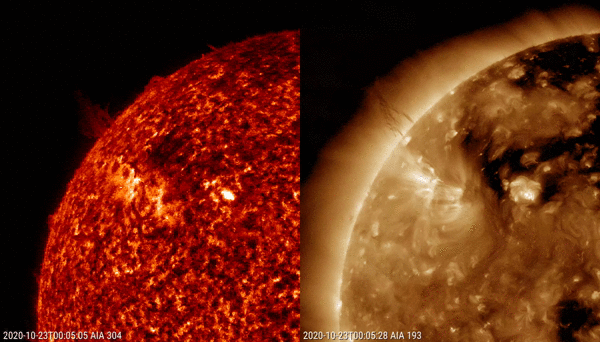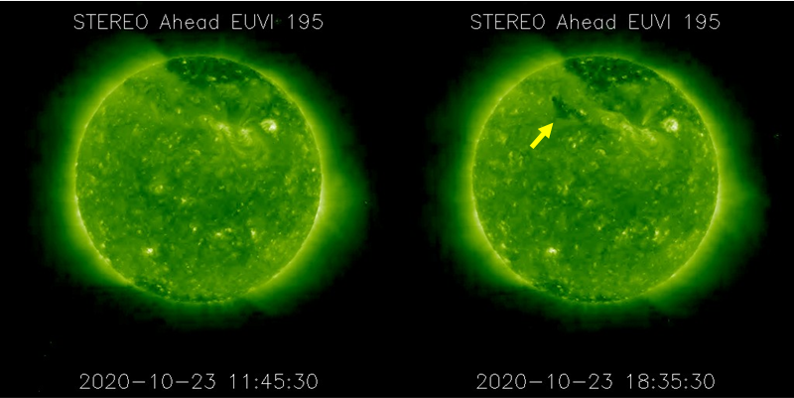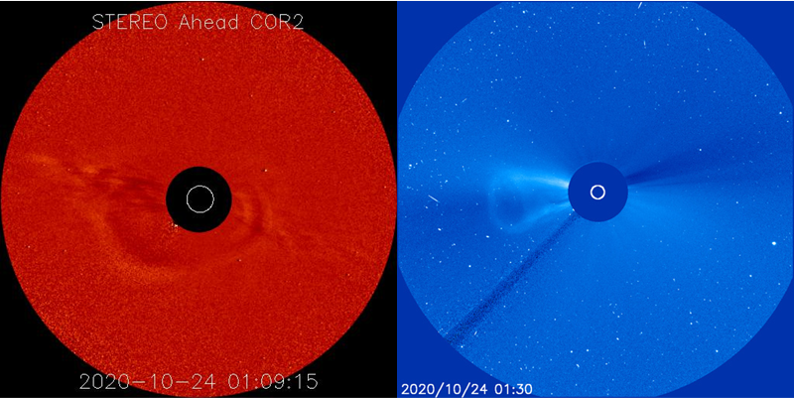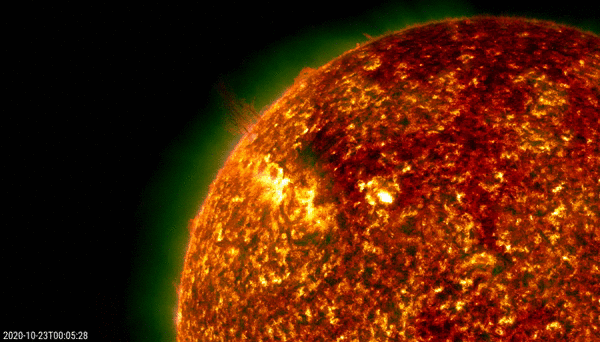A relatively large prominence erupted near the northeast solar limb during the afternoon hours of 23 October. Solar prominences are clouds of charged particles ("plasma") above the solar surface squeezed between magnetic regions of opposite polarity. Being cooler and denser than the plasma underneath and their surroundings, they appear as bright blobs when seen near the solar limb and as dark lines when seen on the solar disk (then they are called "filaments"). Special filters are required to observe these features, such as in the Hydrogen-alpha (H-alpha) line in the red part of the solar spectrum, or in some extreme ultraviolet (EUV) passbands.
The clip underneath (pre- and post-eruption images) shows the eruption as seen in EUV by SDO. In AIA 304 (left), we observe solar plasma at a temperature of about 80,000 degrees. The plasma in the higher chromosphere and lower transition region emits at this wavelength. This temperature is much cooler than most of the other extreme ultraviolet (EUV) filters of SDO, such as AIA 193 (right, about 1.3 million degrees) with which the hot outer atmosphere of the Sun -the corona- is observed. Hence, these "cool" prominences seen in AIA 304 are usually bright against a relatively dark background, whereas in AIA 193 the denser parts of the prominence are mostly observed as dark features against the brighter coronal background.

Both filters have their purposes. Whereas the AIA 304 filter shows better the prominence eruption and the movement of the material over the solar disk, the AIA 193 filter better indicates the post-eruption coronal loops and any coronal dimmings that may indicate the eruption was associated with a coronal mass ejection (CME). In this case, due to the line-of-sight, these darkenings (also called "transient coronal holes") were not very well visible from Earth. However, STEREO-A, currently having a much better view on the east solar limb and its surroundings (see its location) , could clearly observe the coronal dimming (pre- and post-eruption images underneath). Based on an analysis of Stereo-A and SOHO coronagraphic imagery, the associated CME is thought not to be earth-directed.


By putting the imagery obtained thru both filters one on top of each other, some other details may become apparent (courtesy JHelioviewer). In this case for example, it becomes more evident that the eruption originates at the solar limb, and that material is not only slingshotted into space (to the east - "lower left"), but part of it also flows back to a point on the visible solar disk (indicated by the blue arrow in the lower image). This may indicate that the prominence was the visible, trailing part of a nearly invisible filament channel that was located on the solar disk visible from Earth. The location of the coronal loops seems to back this up.






